We’re constantly hearing that someone would like to do some joint project, organize something together, some event, but… damn, how to put it... we really like what you’re doing but it might piss someone off back home. Sure, it’s true that every now and then someone gets kicked out of this institution or that institute for organizing something with Divus, but weren’t they actually terribly self-destructive anyway?… Didn’t they actually need to suffer and to verify that it would really happen?
Ivan Mečl
“I’ll show you some really cool French comics, and not the stuff they show at festivals —Le Dernier Cri from Marseille. Ever heard of them?” was my offer at the end of 2009. “Yes, yes we want them, oh unbearable bearded one,” cried the children from the French institute, “Something really cool! No more mainstream!”
But Le Dernier Cri is more than a bunch of comic strips. It’s a pile of books, many of them hand-printed by the authors themselves with the printing assistance of Pakito or his colleagues, published over the course of more than a decade.
“You’re gonna have to give me some dough for me to go all the way there and pick out the good stuff.” “Yes, yes! Go, fast,” the kids from the institute cried, so that their suffering may be ended. And so I drove along country roads to Marseille in order to save money and bring back a big exhibit and lots of books.
Over the past decade, several hundred traffic circles have been built between Prague and Marseille in order to discourage creative motorists such as myself. Addled and confused, they quickly return to the revolting motorways.
Marseille is a port city in decline inhabited primarily by Semitic-looking inhabitants, the majority of whom call themselves Frenchmen. A handful of original French frenchmen—the last bastion of the white bourgeoisie in town—live a frightened existence wedged in along the harbor lagoons, where each summer they wait until the groups of tourists are large enough so that they can join them in the streets.
Marseille is also one of several cities stamped with a “black penis” as being a city of lost hope. This is the unofficial symbol used by the International Monetary Fund to designate cities that are to be left to their fate. In Marseille, this black penis is the Zaha Hadid office tower, built in 2007 and named after its architect. For economists, bankers, managers, or entrepreneurs, this black landmark in the midst of the city is a lighthouse bearing the warning: “Don’t invest here. This city has been sacrificed to the gods of ruin. Shake hands with the local lost souls, promise them what you like, and then leave never to return.” The gods of economic ruin accept these sacrifices; in return, they leave alone the other cities upon which prosperity has smiled. Meanwhile, the cities of ruin accumulate unsuccessful and inflexible citizens lacking in innovative thought. The construction of a black penis usually begins as a project intended to revitalize a declining region by funding a new office complex using EU structural funds, the IMF or other complex and non-transparent financial resources. But for those in the know, when a tall dark building starts to rise in the city center, that means that it’s time to hightail it out of there. For example, this kind of office tower was built in Belgrade in the 1970s, and it took only 15 years for its stigma to be felt. After its completion in 1974, the black Beograđanka was the pride of Yugoslavia and long the tallest building on the Balkan peninsula. At the time, few people could have predicted its true significance.
This is the reason why in Marseille there are more small and dirty car repair shops stinking of oil but without any cars being repaired than all the different kinds of restaurants combined. In addition to the “black penis,” there are also several cement bridges rising above town, which don’t actually have anything to do with the city. The large, perhaps even once busy international port blocks the city’s access to the sea, having been transformed into an abandoned ferry station to Africa. Thanks to its inescapable fate, Marseille has become one of the most amazing places in the world.
The devilish-looking artist and musician Pakito Bolino has his publishing house and a small silkscreen workshop in an abandoned cigarette factory in town. Bolino has adopted an image to fit his reputation. He refuses to talk with anyone whom he considers an ignoramus, he publicly curses anyone who copies his product (such as Berlin’s Bonogut), and online you’ll be lucky to get three sentences out of him in a year—and these are a combination of the words “yes,” “no,” “let’s do it,” or “let’s fuck it.” Since 1997, he has collected most of the world’s unpublishable or for financial reasons unpublished authors of comics, drawings, collages and various other kinds of what might be called “contemporary art.” In his workshop, he prints them at his own expense and publishes their objectionable stories, series and illustrated theories, or includes them in one of his extensive compilations known as Hôpital Brut (Brutal Hospital). Thanks to his efforts, many of them have become famous artists and the boundaries of what can be published (and sold) have again been pushed a little further back, closer to hell. But Pakito himself has not changed much. He lives in his little house in the middle of the poorer part of Marseille, eats baked ribs, and houses his guests in a dark windowless shed next to the garage that partially serves as a library.
Before departing in a car filled with books and prints, Pakito advised me against traveling back via Switzerland, where the police have already unburdened several buyers and friends of the questionable books that they selected on their visit here. Some of them are fighting the Swiss authorities to this day.
Before I headed back home, one of the adult members of the French institute had a look at the Le Dernier Cri website, and prohibited any exhibition on the institute’s premises. In the end, a symbolic exhibit opening was held at the institute’s café, but the actual exhibition took place in an abandoned basement underneath a crumbling artistic factory, which we quickly emptied of flotsam from the floods, languishing abandoned artworks and the ruins of an art business. We burned the found and rotting corpses of failed curators and abused artists, and ran electrical wiring against all regulations, capable of killing at a range of thirty centimeters, in order to light the place. Neither the French president nor the director of the institute responsible for representing his culture in the Czech Republic showed up. But kids can’t work for them anyway. Child labor has long been outlawed. And besides, those kids have no sense anyway.
Translated from Czech by Stephan von Pohl.







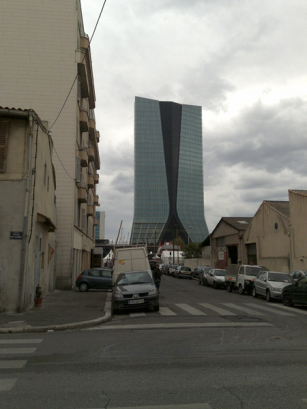






































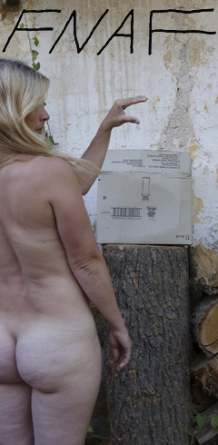






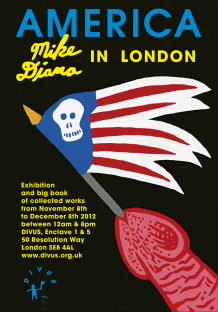




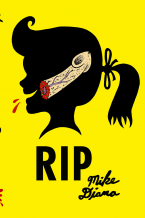

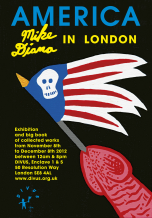
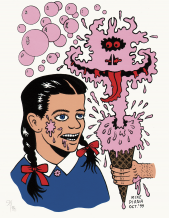


 We Are Rising National Gallery For You! Go to Kyjov by Krásná Lípa no.37.
We Are Rising National Gallery For You! Go to Kyjov by Krásná Lípa no.37.
Comments
There are currently no comments.Add new comment